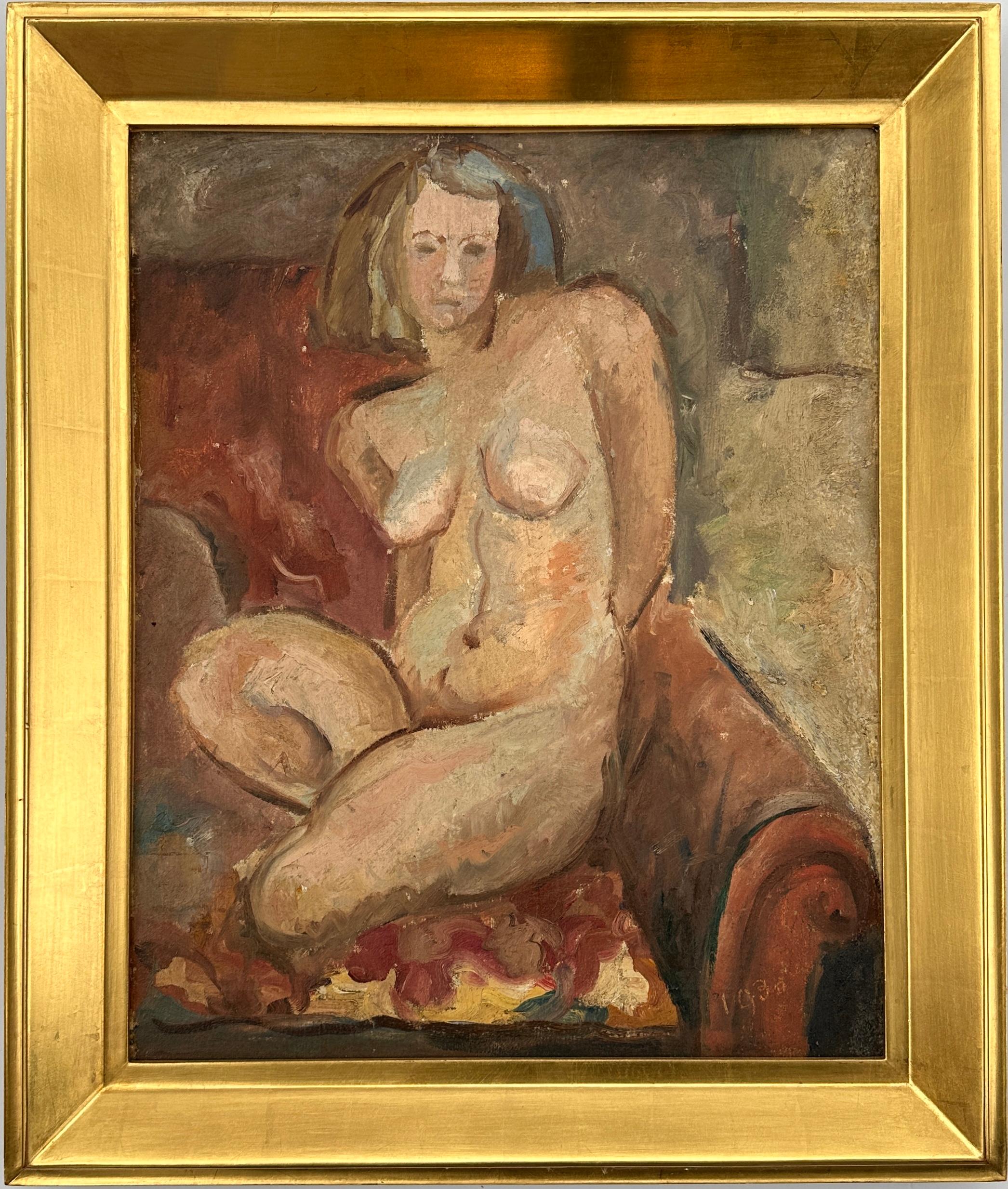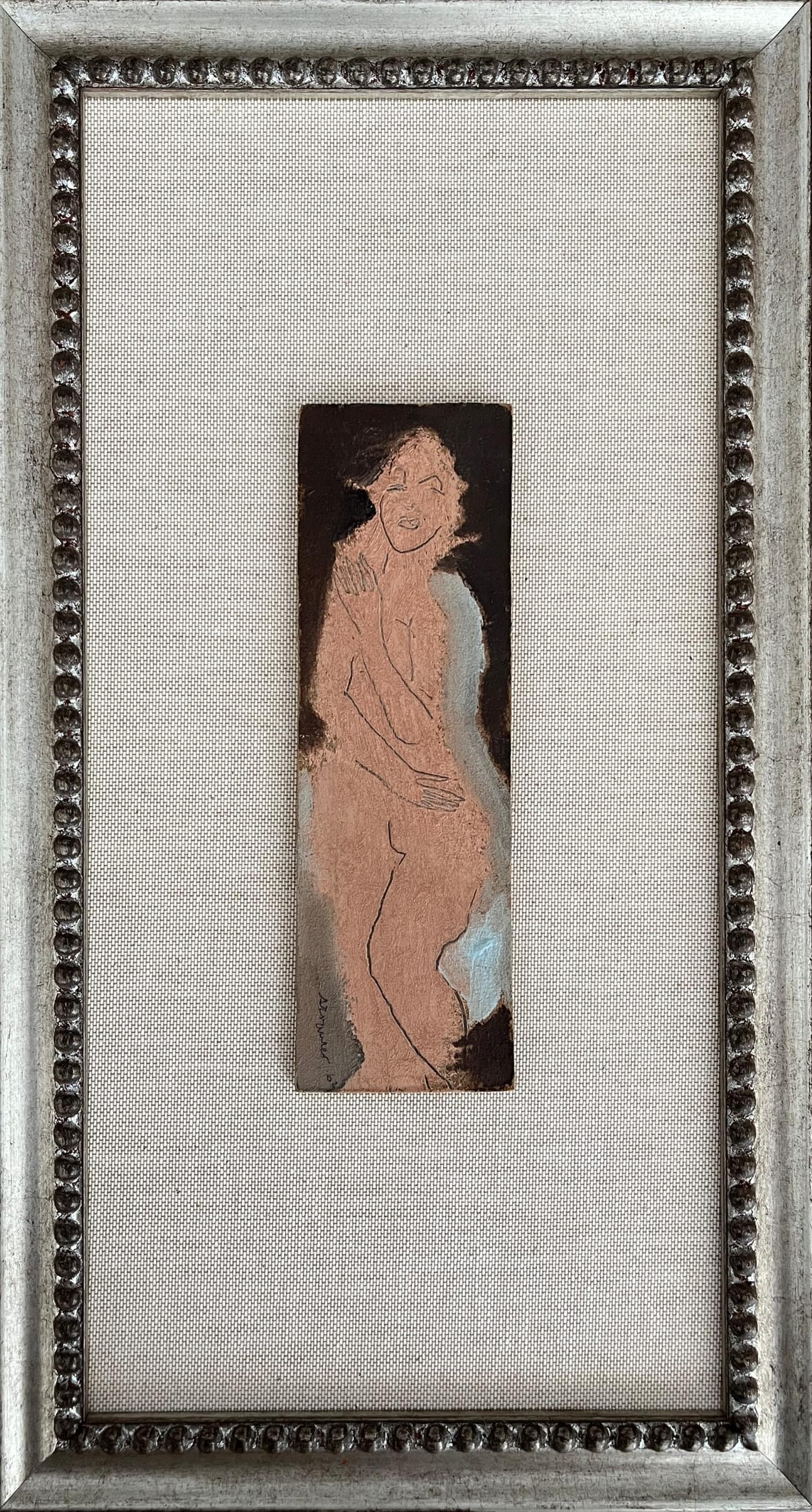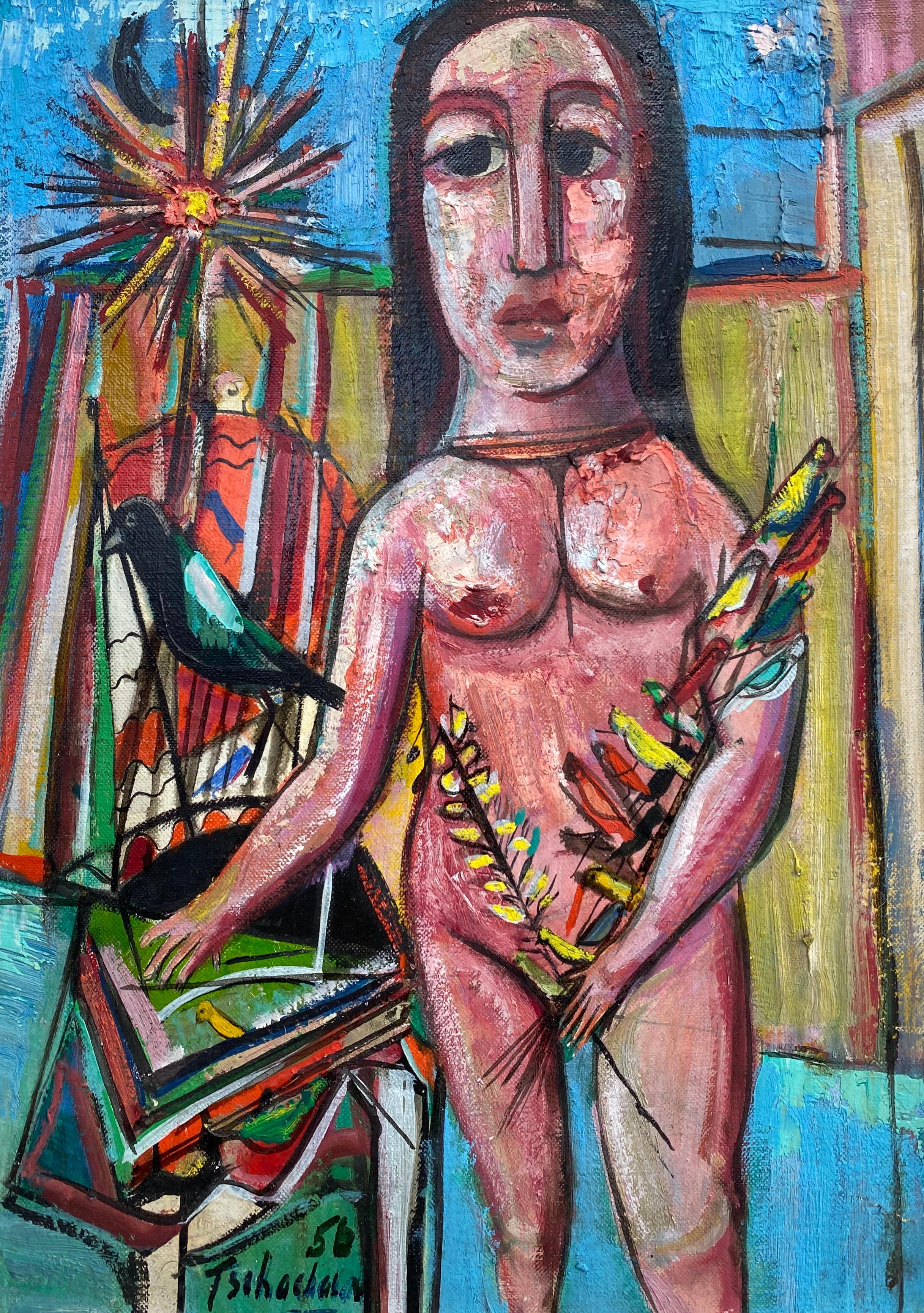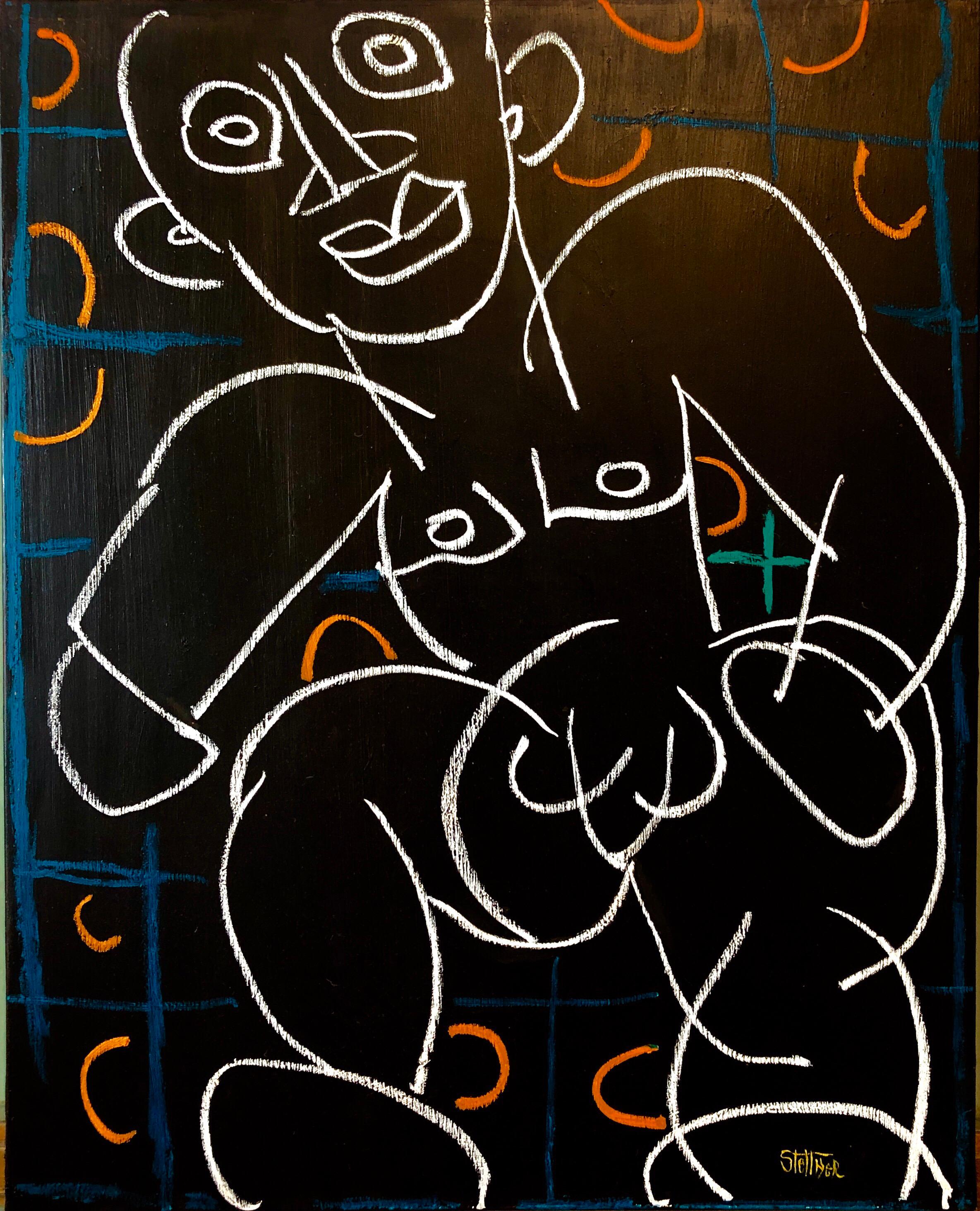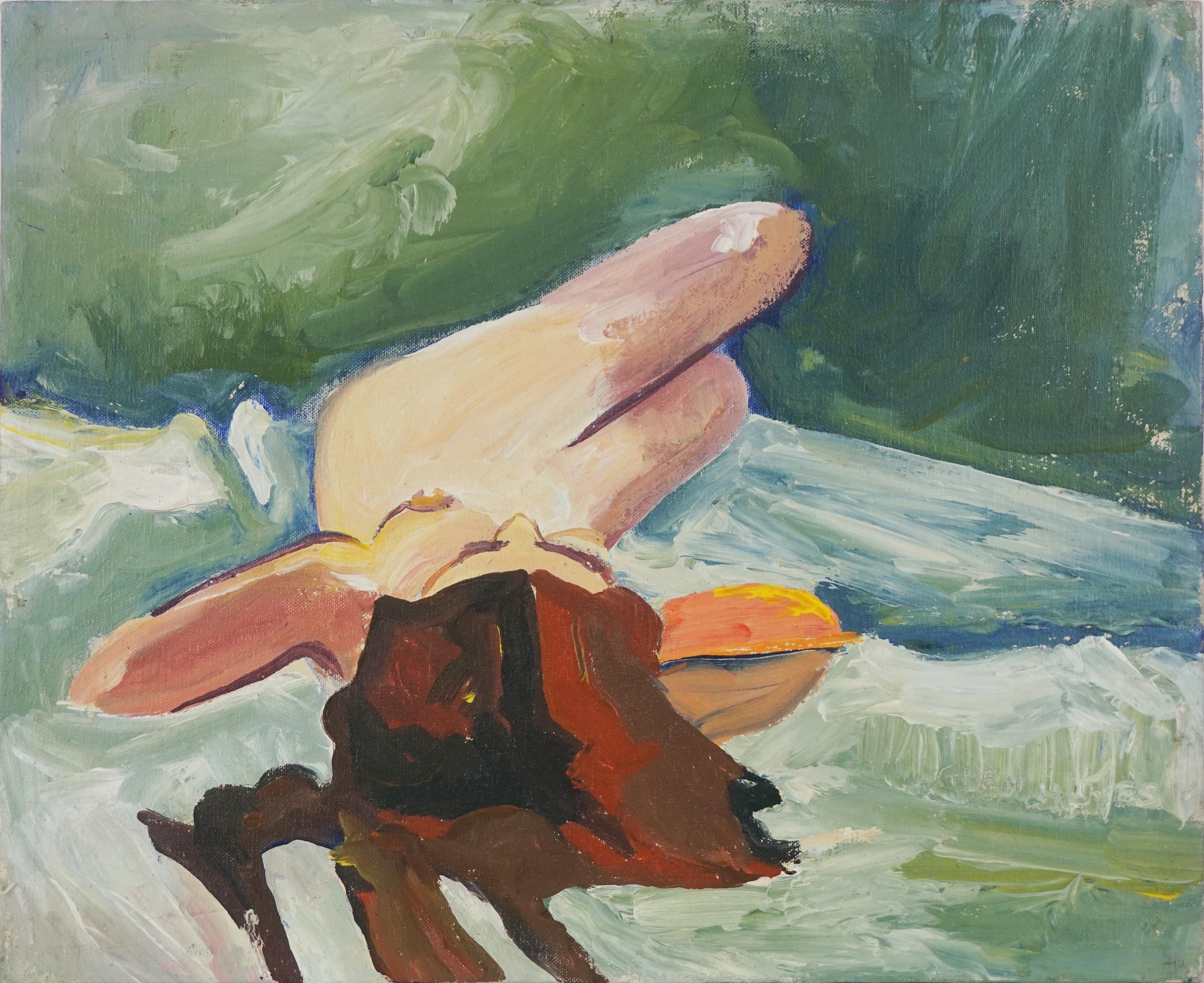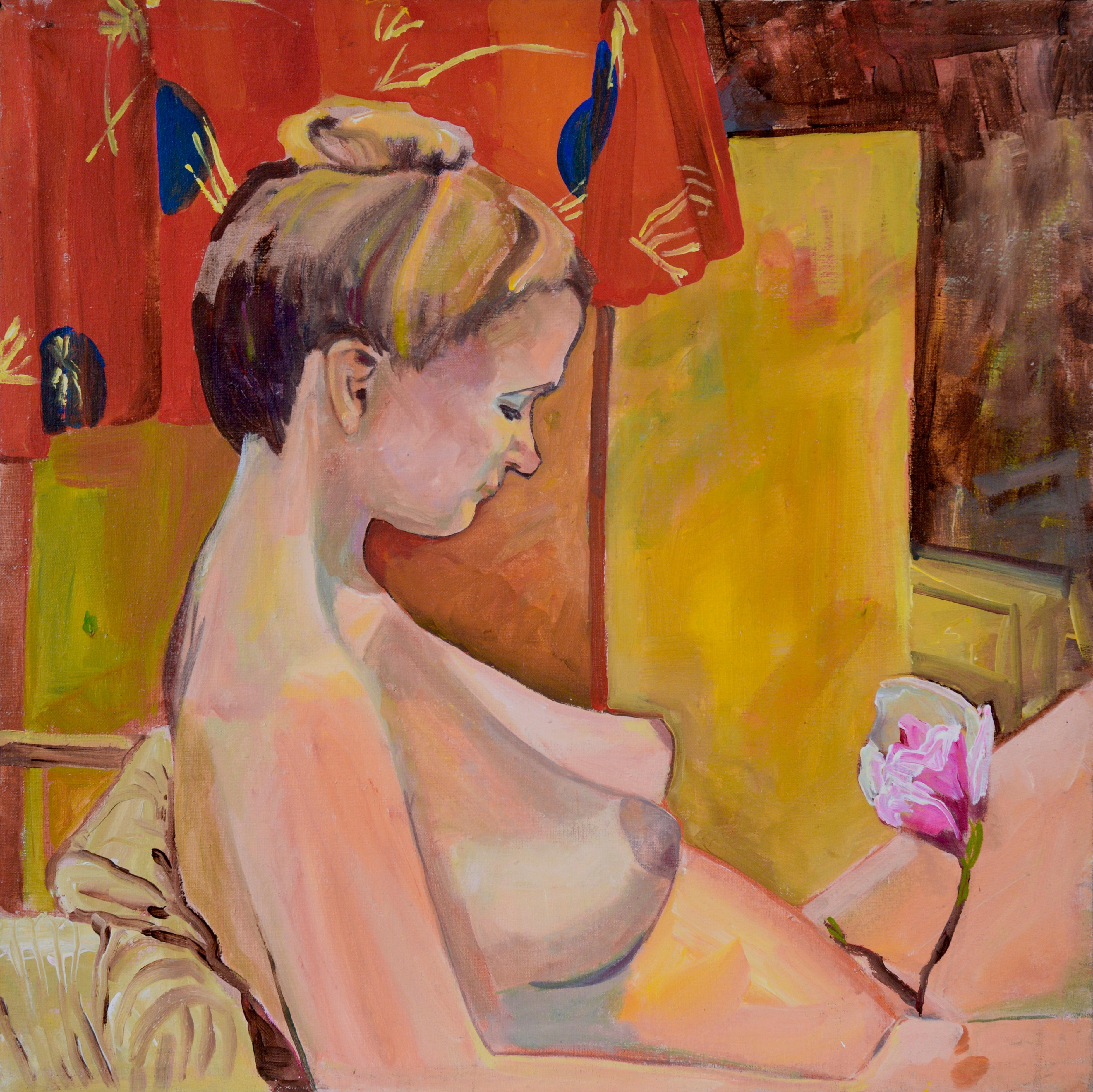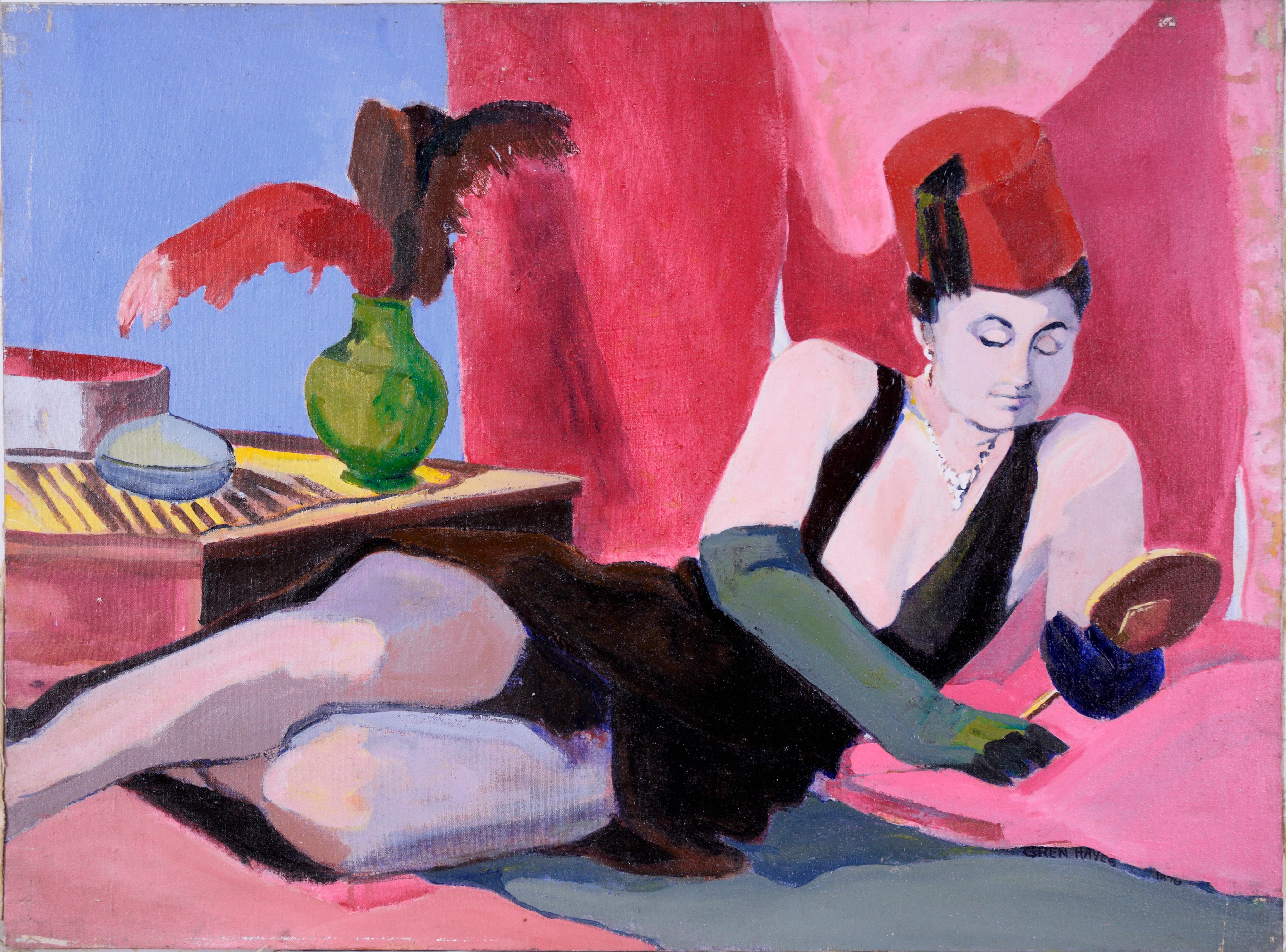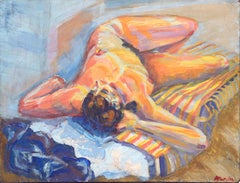
Modernist Nude with Blue, Oil Painting
View Similar Items
1 of 5
Rip MattesonModernist Nude with Blue, Oil Painting
About the Item
- Creator:Rip Matteson (1920 - 2011, American)
- Dimensions:Height: 17.5 in (44.45 cm)Width: 14 in (35.56 cm)Depth: 2 in (5.08 cm)
- Medium:
- Movement & Style:
- Period:
- Condition:Minor vintage wear.
- Gallery Location:San Francisco, CA
- Reference Number:Seller: 343821stDibs: LU29822057403
You May Also Like
- Modernist Reclining Female Nude FigurativeLocated in Soquel, CAModernist reclining female nude figurative painting by an unknown artist (American, 20th Century). This vivid late 20th-century figural piece featur...Category
20th Century American Modern Nude Paintings
MaterialsTempera, Masonite
$760 Sale Price20% Off - Rare Modernist Oil Painting Line Drawing Nude Man Louis StettnerBy Louis StettnerLocated in Surfside, FLSigned and Dated Modern Line Drawing Oil Painting of Nude Man. Louis Stettner (November 7, 1922 – October 13, 2016) was an American photographer of the 20th century whose work inclu...Category
21st Century and Contemporary American Modern Figurative Paintings
MaterialsCanvas, Oil
- Woman in Bloom - Figurative Nude Study Oil on CanvasBy Patricia Gren HayesLocated in Soquel, CAWoman in Bloom - Figurative Nude Study Oil on Canvas A nude woman, seemingly pregnant, sits reclined in a chair with her hands at the base of her belly holding a flower. This striki...Category
Mid-20th Century American Modern Figurative Paintings
MaterialsCanvas, Oil
- "Nude" Sterling Strauser 1962 Small Female Nude Oil on BoardLocated in Arp, TXSterling Strauser "Nude" 1962 Oil on board Framed 13.25 x 7.25 x 1 in Signed and dated in pencil lower right Sterling Strauser was born in Bloomsburg, PA on August 15, 1907. He rece...Category
Mid-20th Century American Modern Figurative Paintings
MaterialsOil, Board
- Smash or PassLocated in New York, NY2023, Oil on canvasCategory
2010s American Modern Figurative Paintings
MaterialsCanvas, Oil
- Mid Century Sitting Nude FigurativeBy Elmer AlbrittonLocated in Soquel, CAMid Century figurative painting of a pensive sitting nude figure with moody, mid-century color palette in the background. Attributed to Elmer S. Albritton, unsigned (American, 1922-...Category
1960s American Modern Nude Paintings
MaterialsCanvas, Oil, Cardboard
$1,480 Sale Price20% Off

